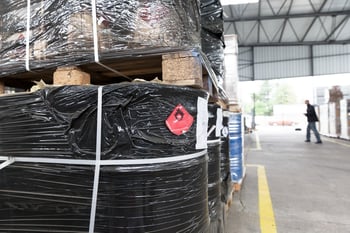
All warehouses have to think about logistics, and the processes they employ to improve workflow, reduce waste, and increase profits. Because there are so many moving parts, it can be difficult to monitor every step of the supply chain, but even the simplest improvements can reap significant rewards.
Reverse logistics is one important example. While most warehouse managers understand the importance of traditional logistics to efficiently move a product from its point of origin to the consumer, reverse logistics is equally important to workflow and can substantially increase profit margins.
What is Reverse Logistics?
Put simply, reverse logistics considers the lifespan of a product beyond delivery to the customer. It is a system for handling products that move backward, from the consumer to the warehouse. The most common example includes merchandise that is returned to the warehouse, often without any damage or defects in the product itself. In other instances, products can be repaired, refurbished, or repurposed in some way and then sold at a discount.
 Reverse logistics is a way of recouping lost profits or increasing profit margins by extending the life of a product. Besides processing returned merchandise, other common examples include:
Reverse logistics is a way of recouping lost profits or increasing profit margins by extending the life of a product. Besides processing returned merchandise, other common examples include:
- Remanufacturing products using a combination of new and used parts to restore them to a new or like-new condition
- Refurbishing used products
- Reusing product packaging
- Managing materials and merchandise that are unused and/or unsold
- Disposing of products that are at the end of their life cycle, often recycling select parts that can be reused or repurposed in some way
- Dealing with products that weren’t properly delivered
- Providing equipment that can be rented or leased by the consumer for a specified period
- Monitoring the necessary repairs and maintenance for rental equipment
In each example, merchandise moves backward through the supply chain, which can pose some logistical challenges. On the other hand, reverse logistics is an opportunity to think outside of the box and find new ways to increase profit.
Benefits of Effective Reverse Logistics
Besides the obvious benefit of helping warehouses gain additional revenue, a reverse logistics process that is thoughtful and well-organized offers several important advantages for the warehouse itself as well as its customers.
For one thing, reverse logistics can help businesses improve the quality of their products. This is especially true if businesses collect data related to customer experiences with a product and their reasons for returning it. These customer insights can help businesses make adjustments to the product that will enhance customer satisfaction and reduce return rates.
 Also, reverse logistics helps with customer retention. In a recent survey, 95% of respondents said they expect to be able to quickly and easily return unwanted products, or else they won’t order again from that merchant. In other words, providing a positive customer experience can boost repeat business along with the company’s overall reputation.
Also, reverse logistics helps with customer retention. In a recent survey, 95% of respondents said they expect to be able to quickly and easily return unwanted products, or else they won’t order again from that merchant. In other words, providing a positive customer experience can boost repeat business along with the company’s overall reputation.
An effective reverse logistics process can also help reduce the cost of storage, transportation, labor, technical support, and return processing. This is because businesses are more intentional about monitoring these areas and optimizing efficiency.
Finally, reverse logistics has a positive impact on the environment as it reduces waste from products and packaging. As materials are recycled for continued use, fewer products are thrown away. There is also more focus on the proper way to dispose of hazardous materials.
Key Considerations
When reviewing your reverse logistics process, there are several important issues to keep in mind:
- Profitability. In some instances, it might be too costly to repair a product or to ship it back to the distribution center. You’d want to carefully consider the value of the product compared with the costs of resale.
- Infrastructure. For a reverse logistics process to produce optimal benefits, you’ll need to have an infrastructure in place to collect data about customer experiences and track the lifecycle of a product.
- Automation. Many warehouses have found it to be extremely cost-effective to automate certain parts of the reverse logistics process, including data collection, inventory tracking, and return processing. Automation not only saves time, but it reduces the risk of human error and can enhance the customer experience.
- Return policies. On the one hand, you want to make it easy for customers to return unwanted products, but on the other hand, you want to reduce high return rates and abuse of the system. It’s therefore important to review your return policy and make adjustments that safeguard your process while still valuing the customer.
- Centralized return centers (CRCs). Increasingly, businesses are utilizing CRCs to manage returned products and to streamline the reverse logistics process.
It’s well worth the time and energy to create a reverse logistics process that will improve customer service, communication, efficiency, and your overall bottom line.












